
- Financial conditions play an influential role in determining economic and financial market outcomes
- Understanding how they evolve can help to evaluate how asset classes are likely to perform
- There are several individual indicators traders can monitor for turning points in financial conditions
Financial conditions have been thrust into the spotlight as a major consideration for monetary policy among major central banks. But what exactly are they? This explainer looks at what determines financial conditions, the impact they have on financial markets and the real economy, along with indicators you can watch to monitor how they’re evolving. Even a basic understanding may help improve investment strategy and asset selection.
Why they matter for the real economy?
Financial conditions influence borrowing costs for companies, households and governments. When conditions are loose, they typically have easier to access credit at lower interest rates, enabling them to expand operations, invest, and rollover existing debts. This helps encourage economic activity, creating jobs and productive capacity that can influence wages growth, inflation and interest rates. Tightening conditions often have a dampening impact on economic activity.
Financial conditions influence on financial markets
Financial conditions refer to a variety of factors such as interest rates, inflation, employment, credit availability, and market liquidity, and the interaction they have with the real economy. The significant influence it has on activity means it’s also a key driver of financial markets, helping to guide investor behaviour and asset prices.
When financial conditions are loose and accommodating, with low interest rates and ample liquidity, investors are typically more optimistic. This often fosters a “risk-on” environment where borrowing costs decline, encouraging investors to seek higher returns by investing in riskier assets, such as stocks or high-yield corporate bonds. Conversely, tightening financial conditions can trigger the opposite response. Rising rates and/or reduced liquidity can fuel risk-averse behaviour, leading investors to shun riskier asset classes in favour of havens like government bonds, cash, gold, and the US dollar.
Financial conditions also heavily influence currency markets. Higher rates in one county might attract investors seeking better returns from abroad, causing the value of that country's currency to rise against others. Conversely, looser financial conditions may weaken a currency if investors deploy capital in higher-yielding currencies . Carry trades involving the low-yielding Japanese yen, encouraging investors to borrow in JPY and invest in higher-yielding assets abroad, is a prime example of how financial conditions interact with FX markets.
As such, tracking financial conditions is crucial for traders to understand. Abrupt shifts can spark volatility and uncertainty for markets, impacting investment strategies, asset prices, and market stability. Consequently, watching them can help you anticipate market movements and adjust your trading decisions accordingly.
The key inputs that determine financial conditions
While there are a variety of aggregate measures that track financial conditions, many often lag real time developments. But watching the key inputs these models utilise can provide a timelier read on how they’re evolving. The following indicators can help traders assess shifts in financial conditions. All can be accessed for free at the Federal Reserve’s Economic Data platform, known simply as ‘FRED’:
Interest Rates: Central banks mostly set overnight interest rates, or the front-end of the yield curve. Lower rates generally signal accommodative conditions, making borrowing cheaper and stimulating economic activity. Conversely, higher rates can tighten financial conditions, making borrowing more expensive. With forward guidance becoming increasingly utilised among central banks since the global financial crisis, signalling looming changes to interest rates is now far more powerful in influencing financial conditions than the interest rate decisions themselves.
Here's the US 2-year Treasury note yield, an indicator widely regarded as a proxy for market expectations on the outlook for the Fed funds rate.
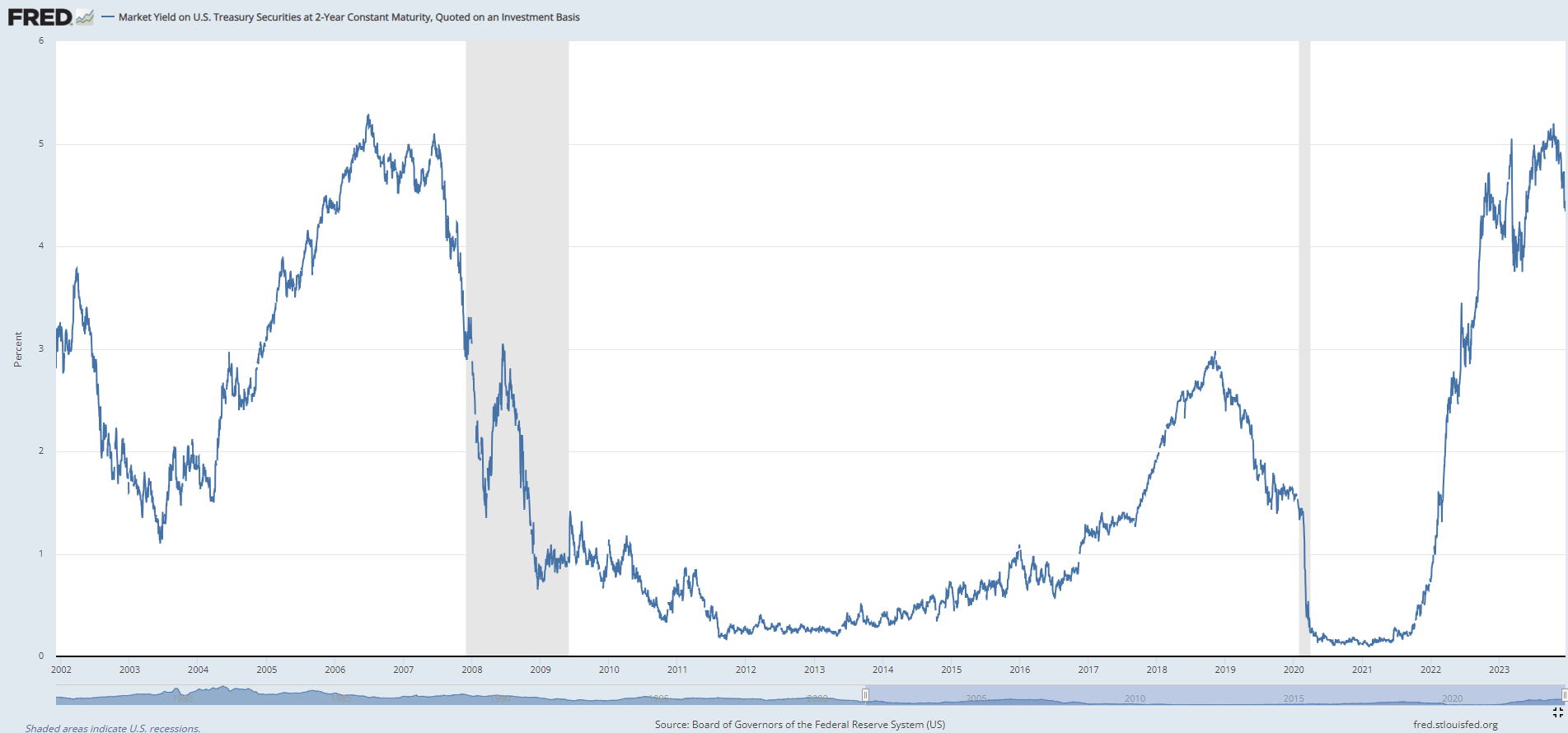
Credit Spreads: These indicate the difference in yields between different types of bonds, such as corporate bonds compared to government bonds. Wider credit spreads suggest tighter financial conditions as investors demand higher returns to compensate for higher perceived risks in lending to corporations.
Here’s the spread, or premium over borrowing costs for the US government, for a basket of US corporate bonds with an investment credit rating.
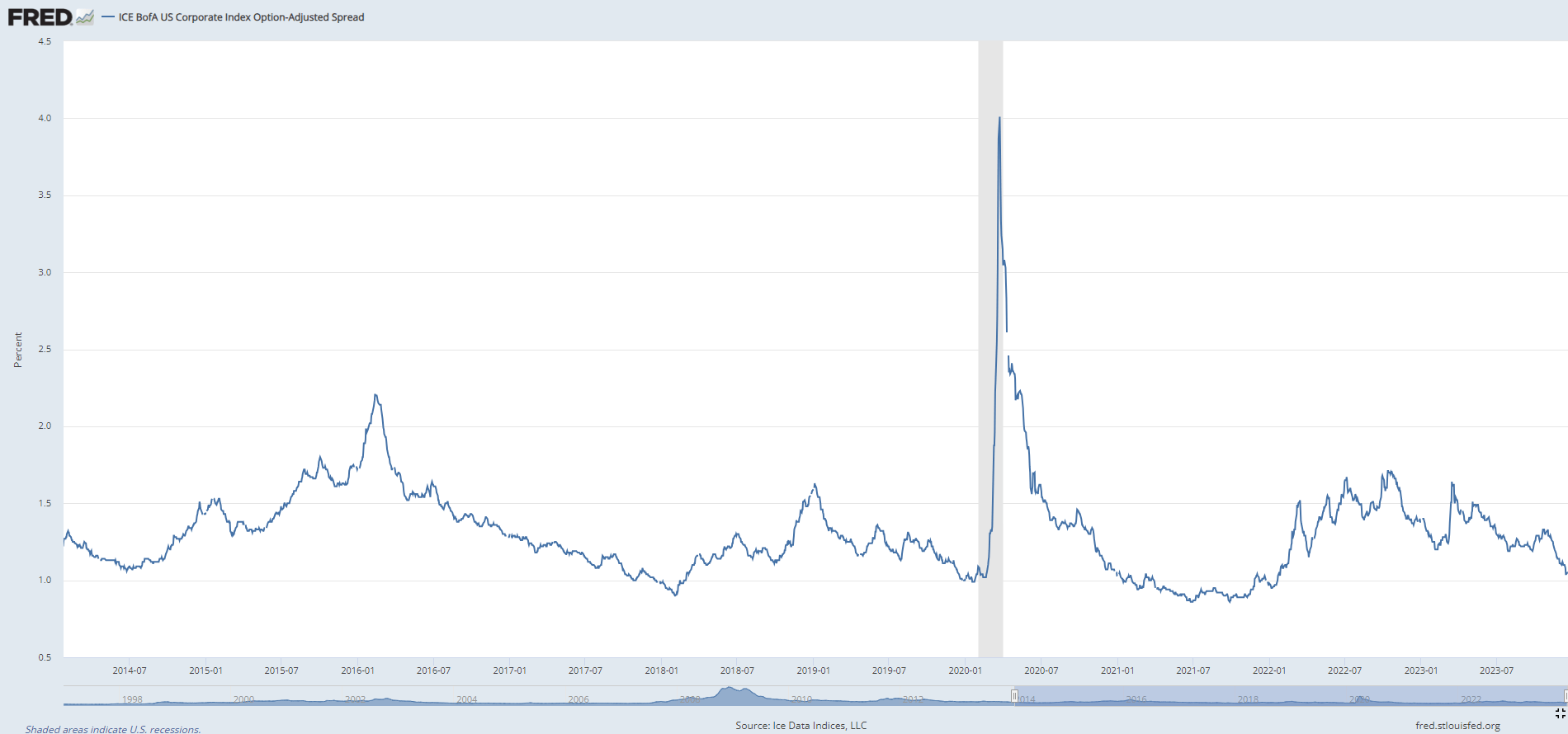
And here’s the same chart but for US corporates with a non-investment grade rating, or “junk” rating.
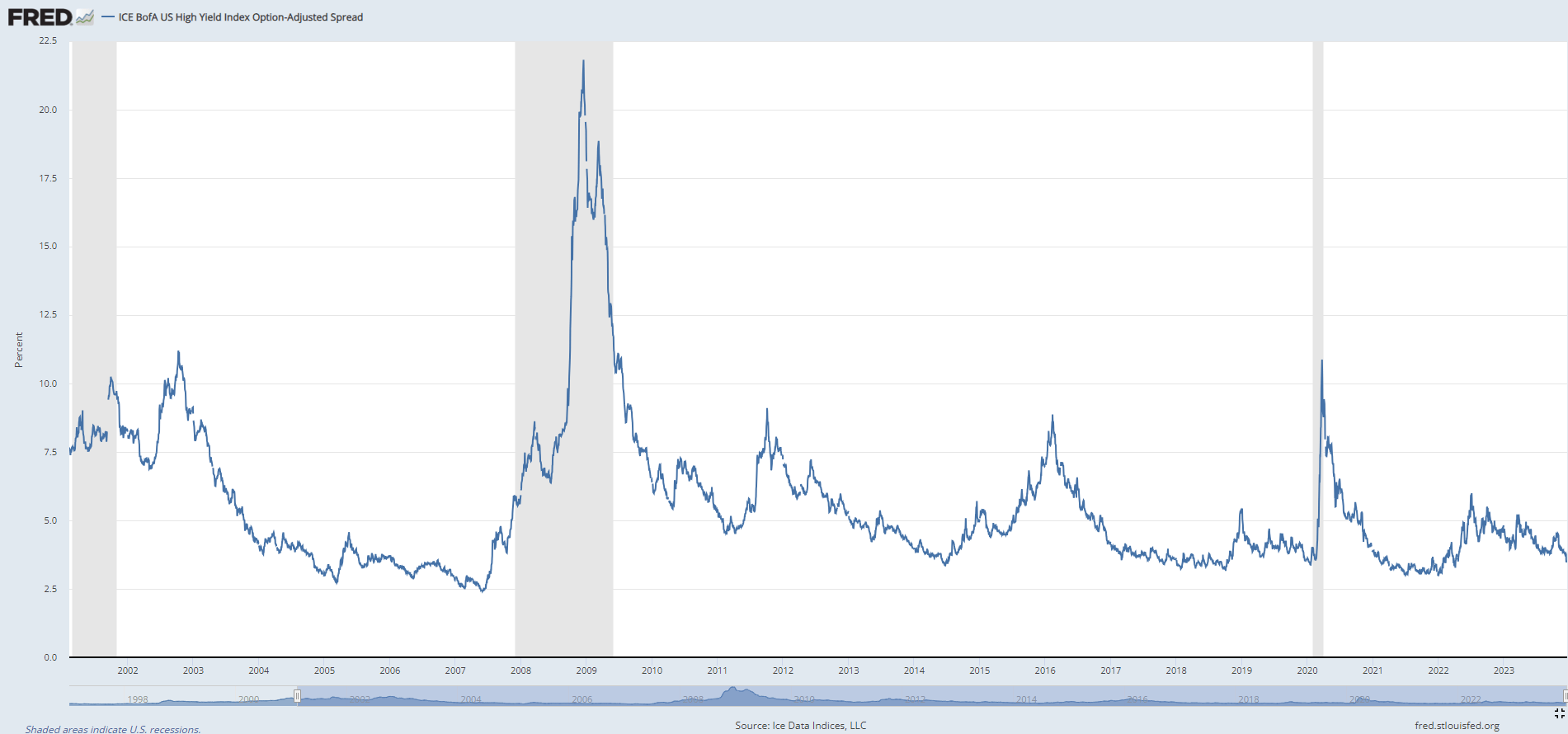
Stock Market Volatility: Expected stock market volatility can influence financial conditions. Declining volatility often loosens financial conditions, acting to boost sentiment and equity prices which can lead to improved access to debt and capital markets for listed companies. It can also create positive flow-on effects to household wealth, and their access to credit. Rising stock market volatility can have the opposite effect, tightening conditions as risk aversion increases.
Here's the US Volatility Index, or VIX, which uses options prices to measure expected volatility for the US S&P 500 in the month ahead.
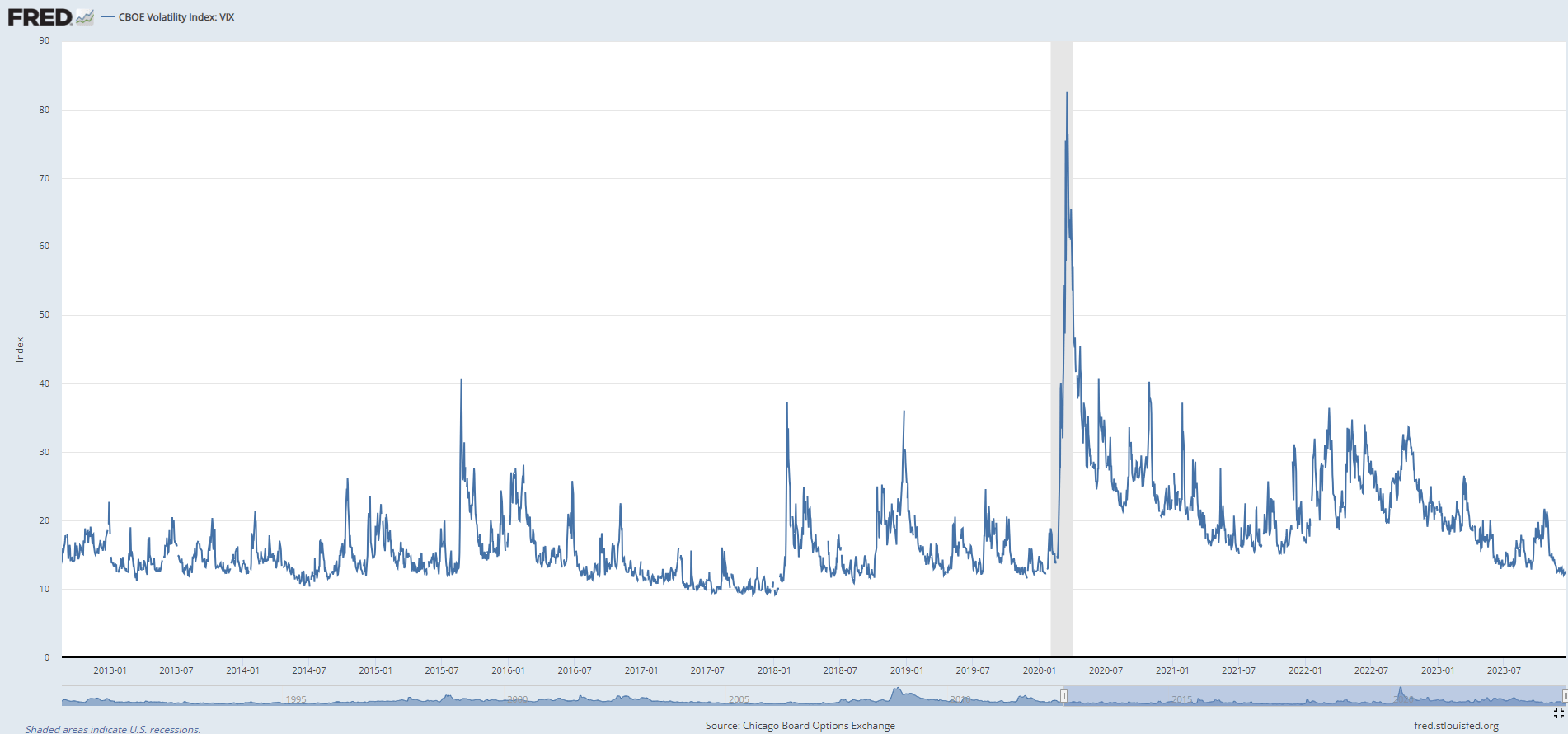
Yield Curves: The shape of the yield curve, which shows the yields of bonds with different maturities, can signal changes in financial conditions. A normal upward-sloping yield curve, where longer-term bonds have higher yields than shorter-term ones, is generally associated with loose conditions. An inverted yield curve, where shorter-term yields are higher than longer-term yields, can signal tightening conditions and potentially a forthcoming economic downturn.
Here's the US 10-year yield less the US 2-year yield, perhaps the most widely referenced recession indicator in financial markets.
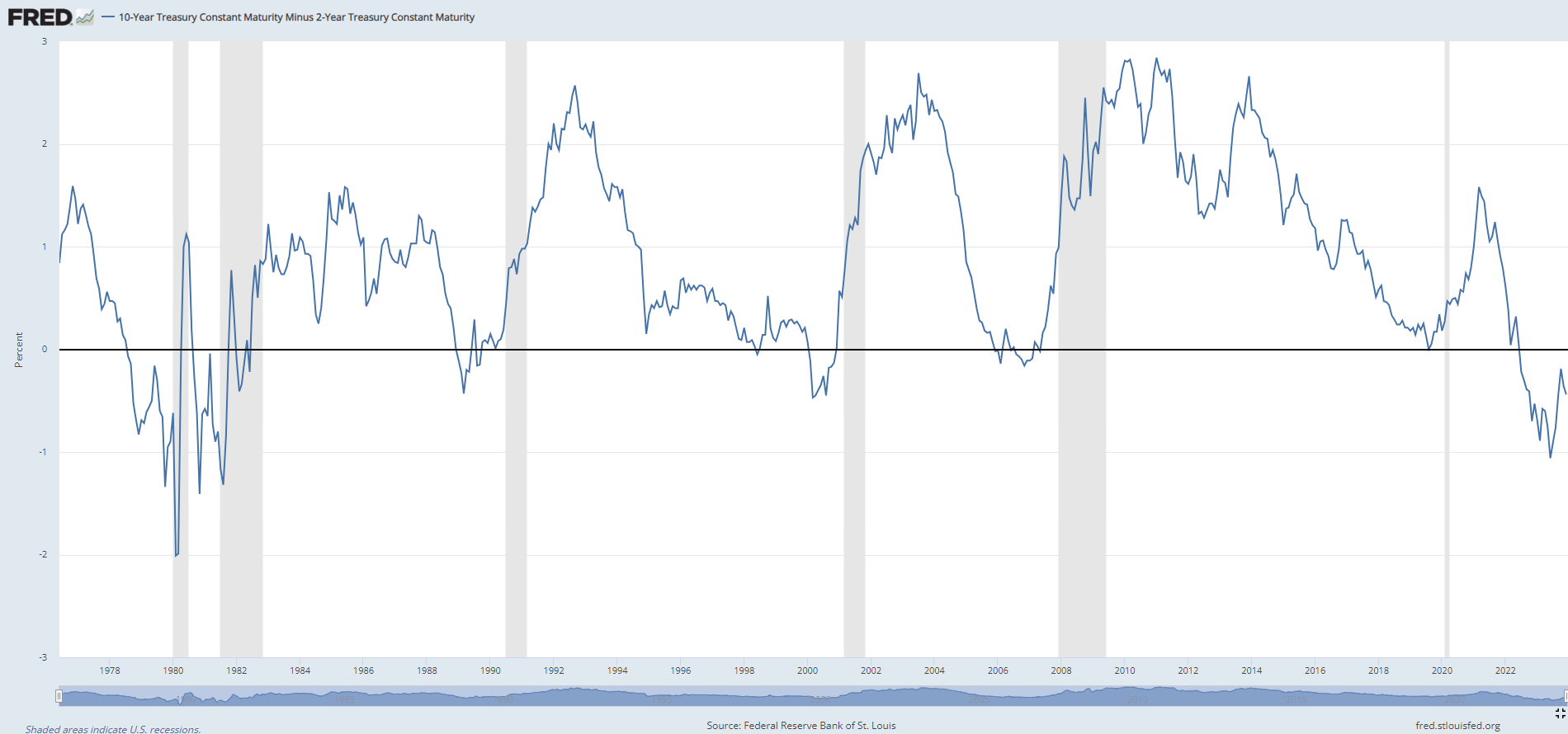
Money Supply: Monitoring the growth rate of the money supply provides insights into the availability of funds in the economy. A rapidly expanding money supply might indicate looser financial conditions, while a stagnant or contracting money supply can suggest tighter conditions.
Here’s the US M2 money supply which tracks cash in circulation along with deposit products that can readily be converted to cash.
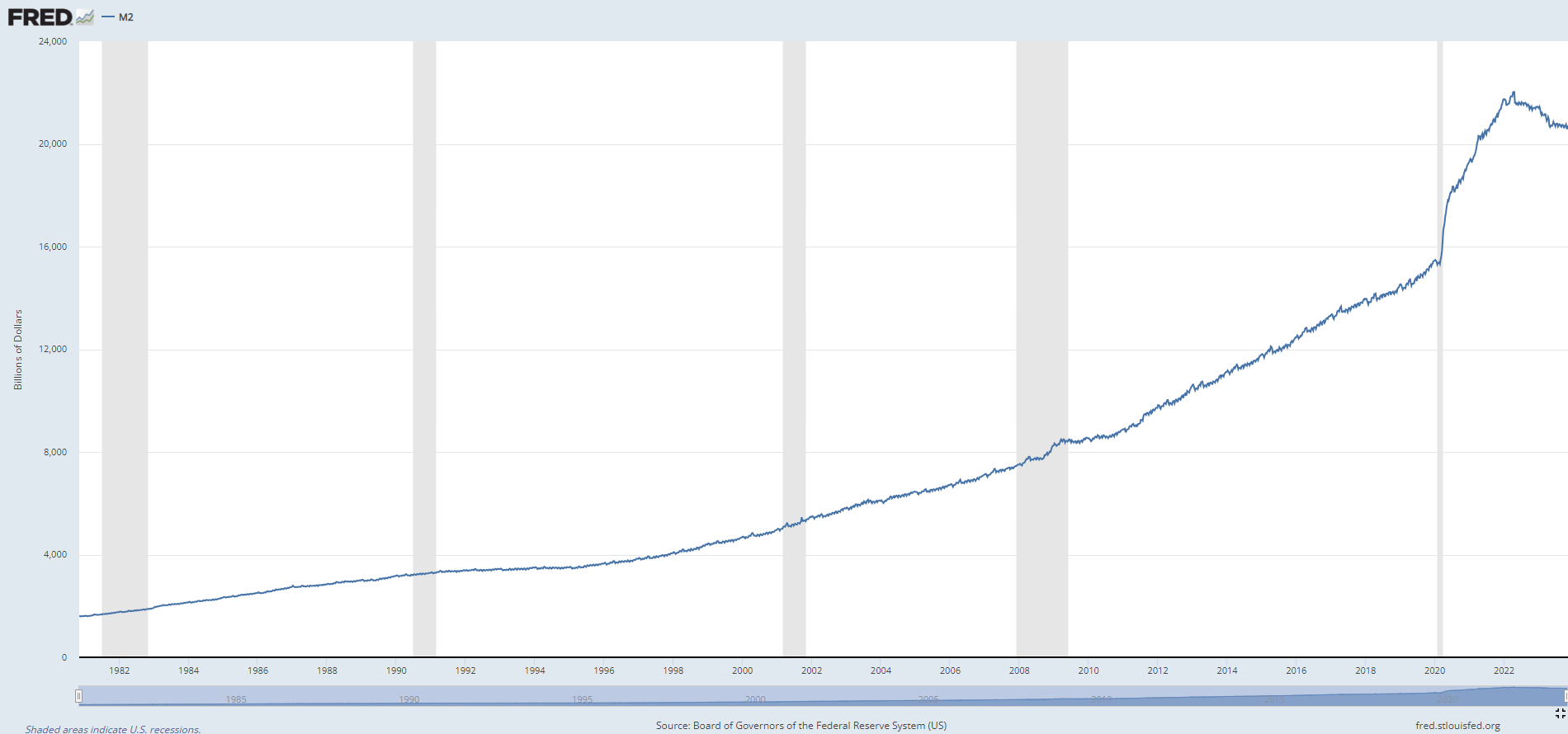
Currency Strength: The value of a currency relative to others can also indicate financial conditions. A strong currency might reflect tighter conditions as investors seek safety in that currency, while a weaker currency could suggest looser conditions as investors seek higher returns elsewhere.
Here’s the nominal trade-weighted US dollar index, measuring its value against the currencies of the Untied States’ major trading partners.
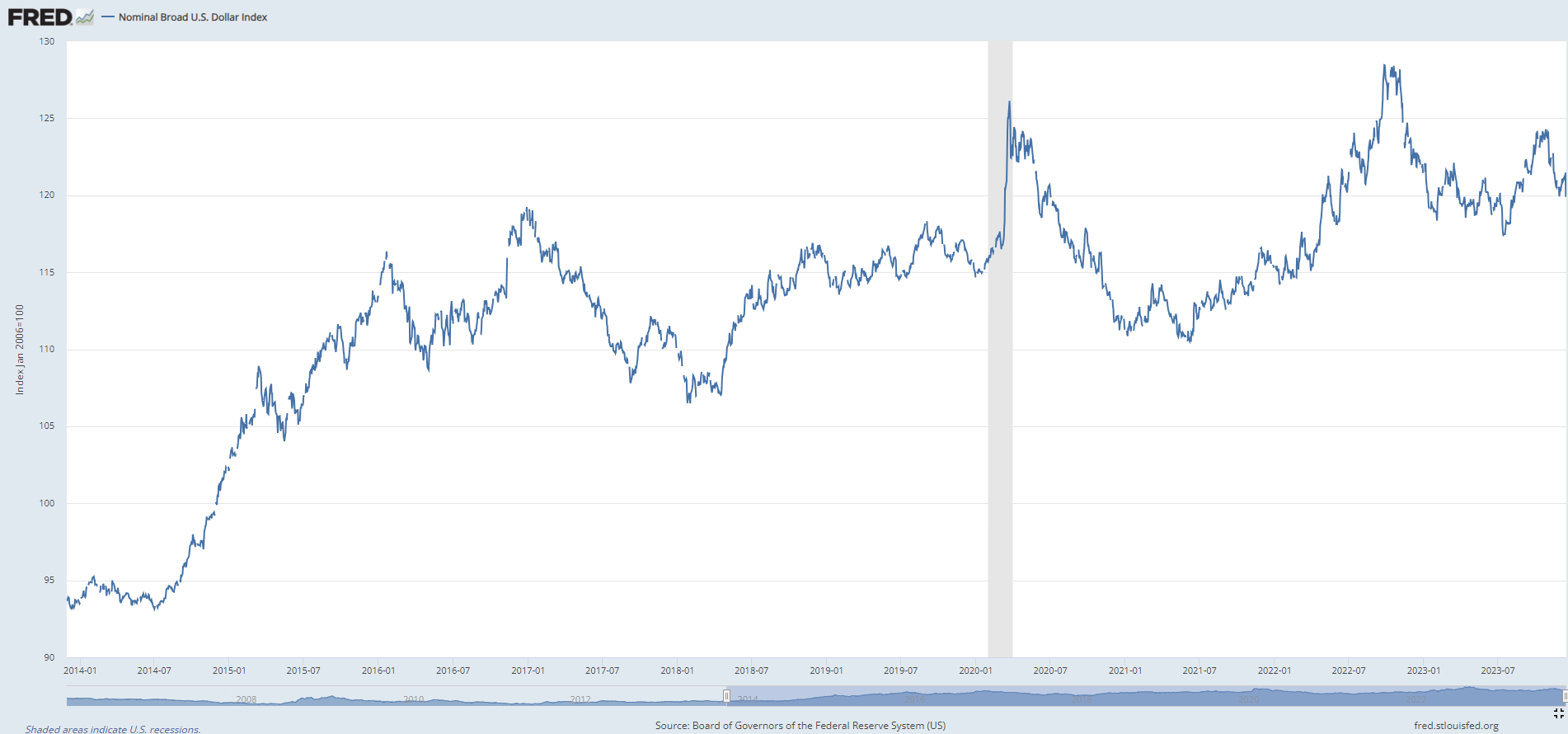
Keeping an eye on these indicators can give traders a top-level view on prevailing financial conditions, making it easier to assess which assets are likely to outperform – and underperform – looking forward. While we’ve focused on US indicators, they are easily transferable across multiple monetary jurisdictions and nations.
-- Written by David Scutt
Follow David on Twitter @scutty




